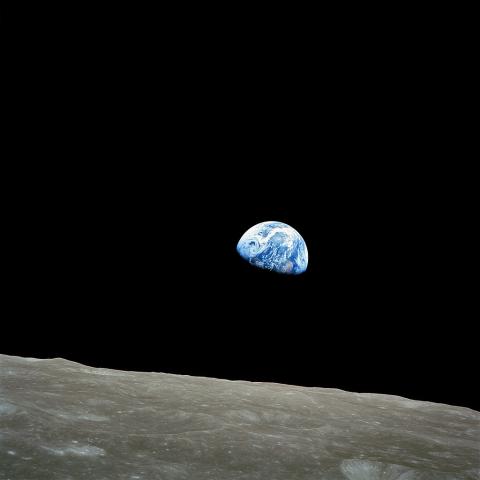Lunch with the Composer - "Earthrise"
Join LSO Composer-in-Residence, Patrick Harlin, and Maestro Timothy Muffitt for a discussion about “Earthrise”, an original work by Patrick Harlin that the orchestra will perform during MasterWorks 5 on Friday, May 13.
This “Lunch with the Composer” is a wonderful opportunity to hear the backstory of Mr. Harlin’s unique world-premiere and learn more about LSO’s very own Composer in Residence. You bring the lunch, we will supply the conversation!
Lunch with the Composer
Tuesday, May 10, 2022
12 Noon – 1 PM
Zoom Link
Conductor
Timothy Muffitt
Earthrise
Patrick Harlin
EARTHRISE
Patrick Harlin (1984–)
Written: 2022
Movements: One
Style: Contemporary American
Duration: Fifteen minutes
In 2021 I applied to go to space. An eccentric billionaire had purchased all the seats for the first trip on the Elon Musk/SpaceX inaugural flight around the moon and was looking for eight artists to join. In 2021, a full year into the pandemic, there was, and continues to be, an overwhelming desire to escape—escape the pandemic, escape politics, escape our bubbles, escape war, escape the climate crises, and if you have a few billion dollars, temporarily escape the planet.
In my application, I suggested that they might pick a composer (myself), and I would write a new orchestral soundtrack for space travel. Some other space repertoire is among the most well-known (Star Wars, Also Sprach Zarathustra, The Planets). It felt oddly coincidental that the exact model of microphones I use for my soundscape recordings became the first sent to Mars on the NASA Perseverance Rover and the first to capture audio on another planet. I was not picked to go to space (the trip hasn’t yet happened), but I decided to write a “space piece” anyway.
EARTHRISE — In 1968, the lesser-known but more groundbreaking Apollo 8 mission had two firsts; they ventured outside Earth’s gravitational field and took the first trip around the moon. Astronauts William Anders, James Lovell, and Frank Borman were tasked with surveying the dark side of the moon. William Anders remarked, “Nobody asked me to take a picture of Earth, I didn’t think about it either.”1 In a twist of fate, as the three astronauts orbited the moon for the third time, their lunar module rotated ever so slightly, bringing the Earth into view above the barren horizon of the moon. Astronaut Bill Anders (recorded on tape) is audibly moved and scrambles to load color film into his camera and snap what became one of the most important photos of the 20th century, now known as EARTHRISE.
Of Earth, James Lovell remarked, “You don’t see cities, you don’t see boundaries, you don’t see countries, you don’t see people, it looks like the place is uninhabited.” Frank Borman opined, “What they should have sent was poets, because I don’t think we captured in its entirety the grandeur of what we had seen… It’s only when you get into the deeper space that you experience the total immersion in the heavens.” William Anders reflected, “When I looked at Earth on the way back and had a little time to be more contemplative…it got me thinking really for the first time that we are just a small piece of an almost infinite universe.”
I don’t want to tell you how to experience this music, but I can offer some insight into what I was thinking while writing. There is a sense of awe in looking at the night sky, the vastness of the universe, and the improbability of reaching the moon, let alone our closet stars. If you are one of the 24 humans to date to take the 240,000-mile trip– the excitement of skyward travel is accompanied by the violence of exiting Earth’s atmosphere and gravitational pull. You are at the mercy of your equipment and present company as you escape, floating. Perhaps you have the feeling that many who take the trip have– we are a speck in the universe, orbiting an otherwise unremarkable star; everything you love is back on that tiny blue marble.
©2022 Patrick Harlin
Vaughn-Lee, Emmanuel, director. Earthrise, PBS, 1 Oct. 2018, https://www.pbs.org/pov/watch/earthrise/. Accessed 1 May 2022.
Sam & Mary Austin Fund for New Music at the Lansing Symphony
